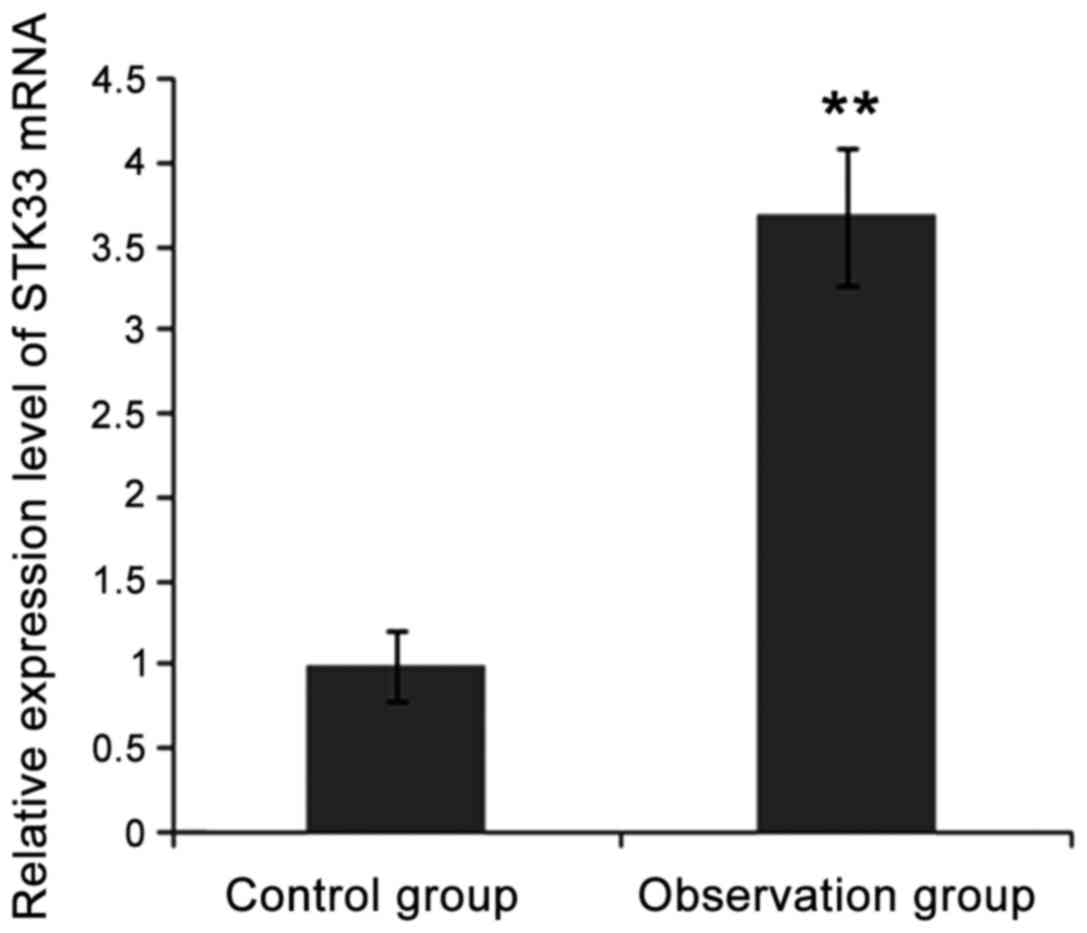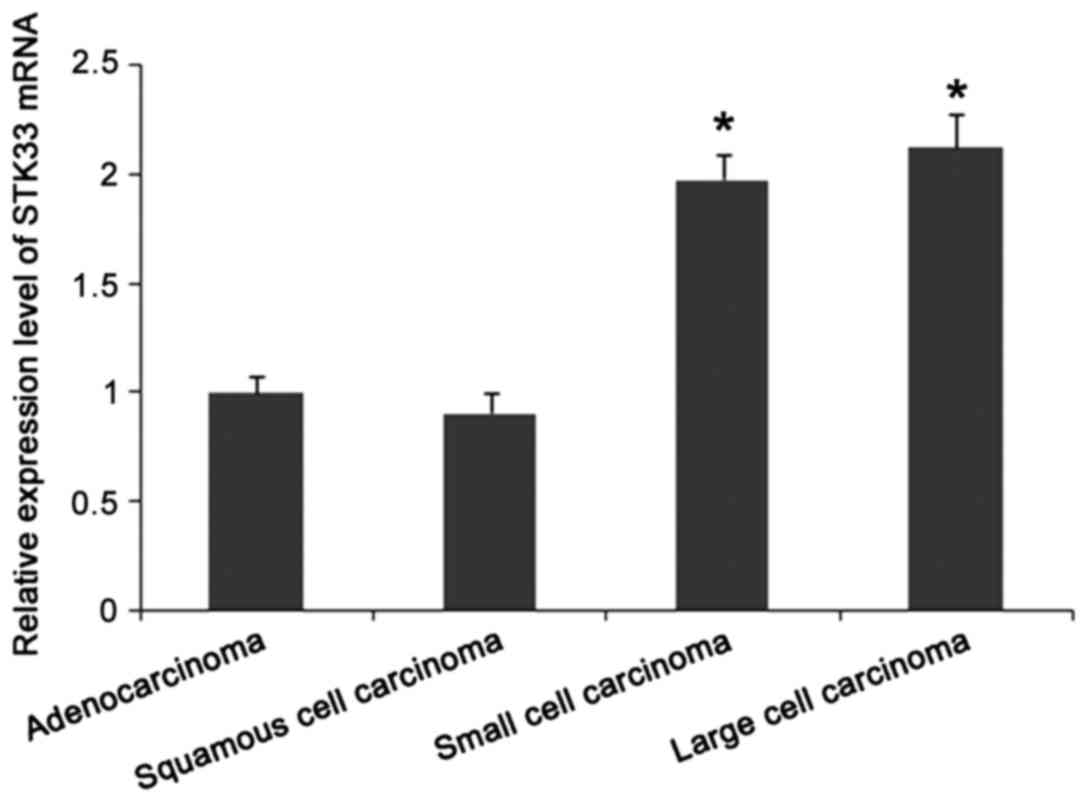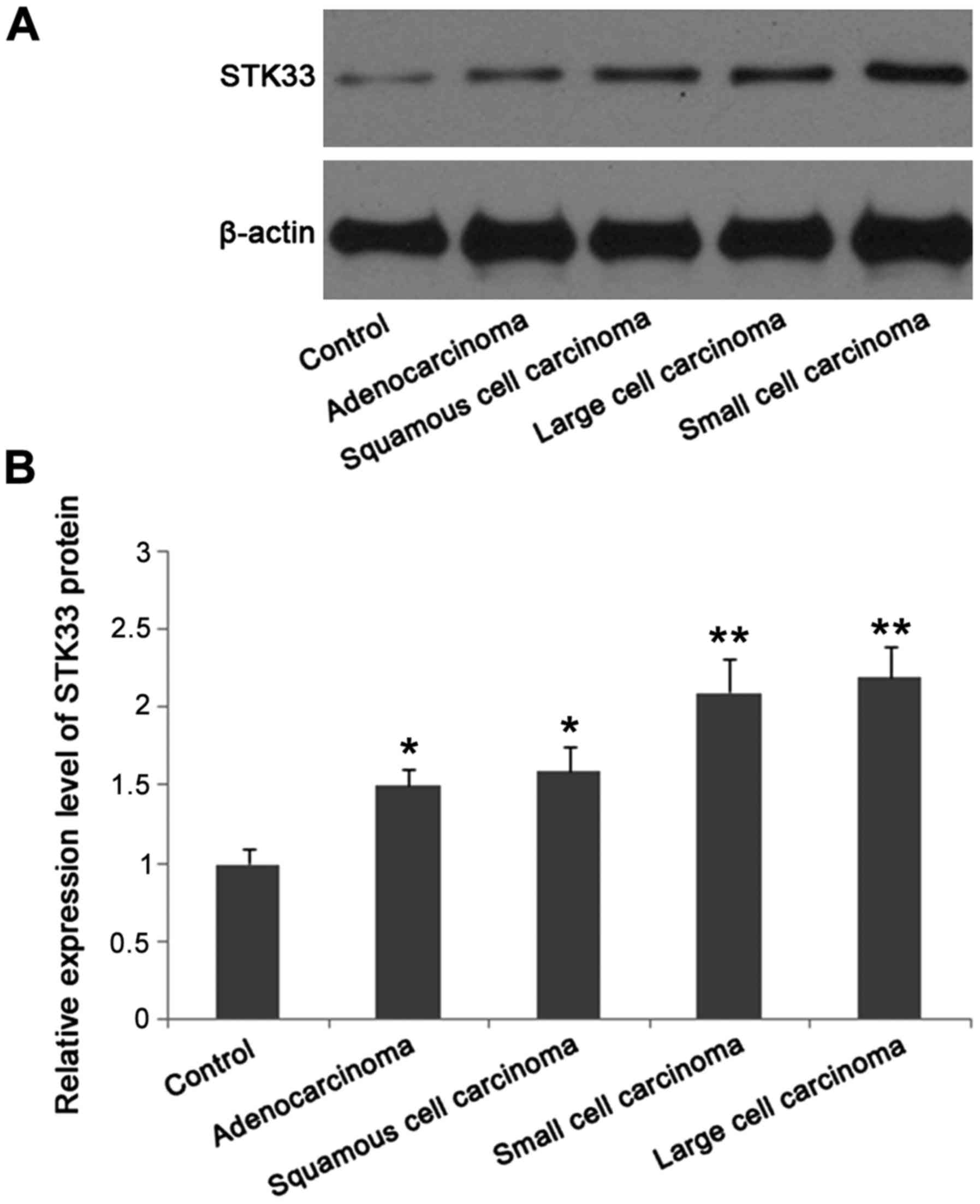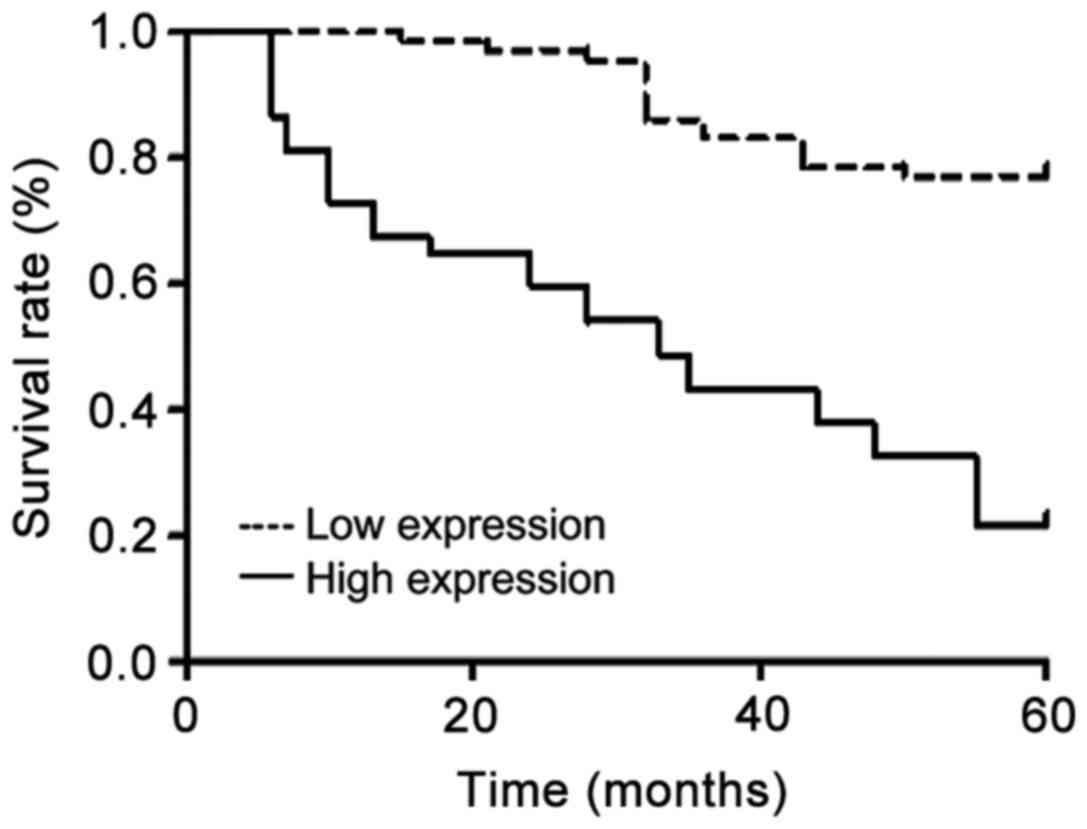Correlation between STK33 and the pathology and prognosis of lung cancer
- Authors:
- Published online on: August 17, 2017 https://doi.org/10.3892/ol.2017.6766
- Pages: 4800-4804
-
Copyright: © Lu et al. This is an open access article distributed under the terms of Creative Commons Attribution License.
Metrics: Total
Views: 0 (Spandidos Publications: | PMC Statistics: )
Total PDF Downloads: 0 (Spandidos Publications: | PMC Statistics: )
Abstract
Correlation between the expression of STK33 and the pathology of lung cancer was investigated, to explore its effects on prognosis. Hundred and two lung cancer patients diagnosed by pathological examinations were randomly selected in Shanghai Jiao Tong University Affiliated Sixth People's Hospital from February, 2012 to February, 2017 to serve as observation group, and the tumor tissues were collected. At the same time, 19 patients with lung benign lesions were selected and lung tissues were also collected to serve as control group. RT-qPCR was used to detect the expression of STK33 mRNA in tissues. Expression levels of STK33 protein were detected and compared by SP immunohistochemistry staining and western blot analysis. Statistical analysis was performed to analyze the correlation between STK33 expression and the pathology and prognosis of lung cancer. Results of PCR showed that expression level of STK33 gene in control group was significantly lower than that in observation group (p<0.05). The expression level of STK33 mRNA in lung adenocarcinoma and squamous cell carcinoma was lower than that in lung small cell carcinoma and large cell carcinoma (p<0.05). Western blot analysis showed that the expression level of STK33 protein in lung small cell carcinoma and large cell carcinoma was significantly higher than that in lung adenocarcinoma and squamous cell carcinoma (p<0.05). Immunohistochemistry staining showed that the positive rate of STK33 in lung large cell carcinoma (100%) and small cell carcinoma (100%) was significantly higher than that in lung adenocarcinoma (88.1%) and squamous cell carcinoma (86.2%) (p<0.05). The 5-year survival rate analysis showed that the recurrence-free survival rate and overall survival rate of STK33 gene high expression level group were significantly lower than those of low expression level group (p<0.05). The differential expression level of STK33 is related to the pathology and prognosis of lung cancer, which is of great value in clinical diagnosis and prognosis evaluation.














